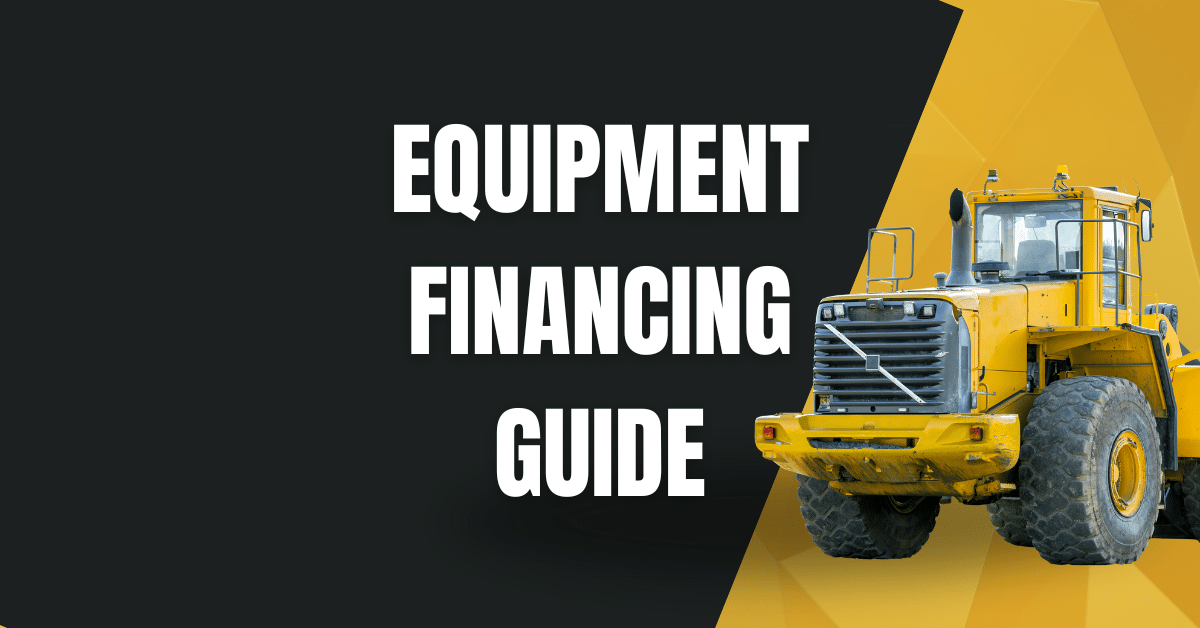Navigating the financial landscape can be a daunting task for small business owners in Australia, especially when it comes to acquiring the necessary equipment to fuel growth and efficiency.
With a myriad of business equipment financing options available, understanding the right approach to capital equipment financing is crucial for success.
Whether you’re considering leasing equipment in Australia or exploring small business loans, making informed decisions can significantly impact your business’s bottom line.
In this guide, we’ll delve into Australian finance options and provide you with the insights needed to confidently secure the resources that will empower your business to thrive. Join us as we uncover strategies and success stories that illuminate the path to smart equipment finance in Australia.
Understanding Equipment Finance
Equipment finance is a crucial aspect of business growth in Australia. Let’s explore the key concepts and their importance for small businesses.

Defining Business Equipment Financing
Business equipment financing refers to the various financial solutions available to companies for acquiring necessary machinery, vehicles, or technology. These options allow businesses to access essential tools without large upfront costs.
Equipment finance can take several forms, including loans, leases, and hire purchase agreements. Each option has its own set of advantages and considerations, tailored to different business needs and financial situations.
By leveraging equipment finance, companies can preserve working capital, manage cash flow more effectively, and stay competitive in their respective industries.
Importance of Equipment Finance Australia
In the Australian business landscape, equipment finance plays a vital role in driving economic growth and innovation across various sectors. It enables businesses of all sizes to access cutting-edge technology and machinery.
For small and medium enterprises (SMEs), equipment finance can be a game-changer. It allows these businesses to compete with larger corporations by providing access to the same quality of equipment without straining their financial resources.
Moreover, equipment finance in Australia often comes with tax benefits, making it an attractive option for businesses looking to optimize their financial strategy.
How Small Business Loans Support Growth
Small business loans are a cornerstone of equipment financing, providing the necessary capital for businesses to invest in growth-driving assets. These loans offer flexibility and can be tailored to specific business needs.
By utilizing small business loans for equipment purchases, companies can:
-
Upgrade outdated machinery to improve efficiency
-
Expand product lines or services with new equipment
-
Meet increased demand by scaling operations
Furthermore, these loans often come with competitive interest rates and repayment terms, making them an accessible option for businesses at various stages of growth.
Benefits of Equipment Financing
Equipment financing offers numerous advantages for businesses in Australia. Let’s examine the key benefits and options available.
Advantages of Capital Equipment Financing
Capital equipment financing provides businesses with the means to acquire high-value assets essential for their operations. This form of financing offers several benefits that can significantly impact a company’s growth and financial health.
One of the primary advantages is the preservation of working capital. By financing equipment purchases, businesses can retain their cash reserves for other critical areas such as marketing, inventory, or expansion plans.
Additionally, capital equipment financing often allows for more favorable tax treatments. Businesses may be able to deduct lease payments or depreciation, potentially reducing their overall tax burden.
Australian Finance Options Explained
The Australian financial market offers a diverse range of equipment financing solutions to cater to various business needs. Understanding these options is crucial for making informed decisions.
Common finance options include:
-
Equipment loans: Borrowing money specifically for equipment purchases
-
Finance leases: Long-term agreements where the business has the option to purchase the equipment at the end of the lease
-
Operating leases: Shorter-term agreements with lower payments, ideal for equipment that requires frequent upgrades
Each option has its own set of pros and cons, and the best choice depends on factors such as cash flow, tax considerations, and long-term business strategy.
Leasing Equipment in Australia
Leasing equipment has become an increasingly popular option for businesses in Australia, offering flexibility and financial advantages. This approach allows companies to access the latest technology without the commitment of ownership.
Key benefits of leasing include:
-
Lower upfront costs compared to purchasing
-
Potential tax benefits, as lease payments may be tax-deductible
-
Easier equipment upgrades, keeping businesses technologically competitive
However, it’s important to consider the total cost over time and any end-of-lease obligations when opting for this financing method.
Choosing the Right Finance Option
Selecting the most suitable equipment finance solution is crucial for your business’s success. Let’s explore how to make this important decision.
Assessing Your Business Needs
Before diving into equipment finance options, it’s essential to conduct a thorough assessment of your business needs. This evaluation will help you make an informed decision that aligns with your company’s goals and financial situation.
Start by identifying the specific equipment required and its role in your business operations. Consider factors such as the equipment’s lifespan, potential for technological obsolescence, and its impact on productivity.
Next, analyze your financial position, including cash flow projections, current debt levels, and growth plans. This information will guide you in determining the most appropriate financing structure for your business.
Comparing Finance Solutions
When it comes to equipment finance, one size doesn’t fit all. It’s crucial to compare various solutions to find the best fit for your business.
Consider factors such as interest rates, repayment terms, and any additional fees when comparing these options.
Remember, the cheapest option isn’t always the best – look for a solution that offers the right balance of cost, flexibility, and long-term value.
Partnering with Trusted Advisors
Navigating the complexities of equipment finance can be challenging. Partnering with trusted advisors can provide valuable insights and help you make the best decision for your business.
Consider consulting with:
-
Financial advisors who specialize in business equipment financing
-
Accountants who can provide tax advice related to equipment purchases
-
Industry peers who have experience with similar financing decisions
These experts can offer personalized advice based on your specific business situation and help you avoid common pitfalls in the equipment financing process.
Success Stories and Case Studies
Real-world examples can provide valuable insights into effective equipment financing strategies. Let’s explore some success stories from Australian businesses.
Small Business Success with Equipment Finance
The right equipment finance strategy can be transformative for small businesses. Consider the case of a Melbourne-based printing company that leveraged equipment financing to upgrade its technology.
By opting for a finance lease on a state-of-the-art digital printer, the company was able to:
-
Increase production capacity by 50%
-
Reduce operational costs by 30%
-
Expand its service offerings to include high-quality, short-run printing
The flexible lease terms allowed the business to manage cash flow effectively while accessing technology that was previously out of reach. This strategic decision led to a 40% increase in revenue within the first year of implementation.
Innovative Uses of Equipment Financing
Equipment finance isn’t just for traditional machinery. Innovative businesses are using these solutions to fund a wide range of assets that drive growth and efficiency.
For example, a Perth-based software company used equipment financing to invest in a high-performance computing cluster. This allowed them to:
-
Accelerate product development cycles
-
Offer cloud-based services to clients
-
Compete with larger, established firms in the market
By thinking creatively about what constitutes “equipment,” businesses can leverage financing options to fund critical assets that fuel innovation and competitive advantage.
Lessons Learned from Australian Entrepreneurs
Australian entrepreneurs who have successfully navigated equipment financing offer valuable lessons for others. Here are key takeaways from their experiences:
-
Do your homework: Thoroughly research equipment options and financing solutions before making a decision.
-
Think long-term: Consider future business needs and equipment lifespan when choosing financing terms.
-
Negotiate: Don’t hesitate to negotiate terms with finance providers to get the best deal for your business.
-
Stay flexible: Opt for financing solutions that offer flexibility to adapt to changing business needs.
-
Seek advice: Consult with financial advisors and industry experts to make informed decisions.
Navigating the Application Process
Securing equipment finance requires careful preparation and understanding. Let’s break down the key steps and considerations.
Preparing for Equipment Finance Approval
Successful equipment finance applications require thorough preparation. Start by gathering all necessary documentation, including financial statements, business plans, and equipment specifications.
Ensure your credit score is in good standing, as this will significantly impact your approval chances and interest rates. If there are issues with your credit, address them before applying.
Create a clear business case for the equipment, demonstrating how it will contribute to your company’s growth and profitability. This will help lenders understand the value of their investment in your business.
Understanding Terms and Conditions
Before signing any agreement, it’s crucial to fully understand the terms and conditions of your equipment finance arrangement. Pay close attention to:
-
Interest rates and how they’re calculated
-
Repayment schedules and any flexibility in payment terms
-
Any fees or charges, including early repayment penalties
-
End-of-term options, especially for leases
Don’t hesitate to ask for clarification on any points you’re unsure about. It’s better to fully understand the agreement now than to face surprises later.
Ensuring Long-term Financial Health
While equipment finance can provide immediate benefits, it’s important to consider its long-term impact on your business’s financial health. Here are some strategies to maintain financial stability:
-
Regularly review and update your financial projections to ensure you can meet repayment obligations
-
Consider the total cost of ownership, including maintenance and potential upgrades
-
Maintain a contingency fund for unexpected expenses or market downturns
-
Regularly reassess your equipment needs and financing arrangements to ensure they continue to serve your business well
By taking a proactive approach to financial management, you can maximize the benefits of equipment finance while minimizing potential risks.
👉 Checkout the best business finance options here.




